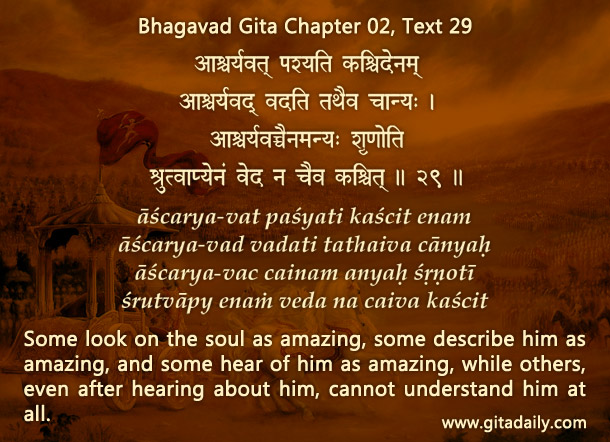Getting a bird’s eye-view of something refers idiomatically to looking at the big picture, seeing that thing in a broader context – akin to how a bird sees a thing on the earth in the context of the many things around it.
This idiomatic usage is fine, but its literal implication isn’t. Literally, we can never have a bird’s eye-view – we can only have a human view from a bird’s physical perspective. For example, when we fly above a city in a plane or when we, through a thought-exercise, conceive of ourselves as seeing the city from that height, we may see things from a bird’s physical perspective. But we can’t really see things the way a bird sees them. A bird’s eye-view is determined not just by the place from where it sees, but more so by the way it sees. And as the bird has its own individual consciousness, that way of perceiving remains that bird’s alone.
The first-person experience of consciousness is not replicable by any other person. The Bhagavad-gita (15.09) indicates that the soul in its embodied condition gets a particular set of senses to perceive sense objects in a way compatible with its desires and karma. Every one of us, not just every human being but every living being, is an irreducible, individual agent of consciousness. The Gita (02.28) indicates as astonishing the reality that billions of souls, all with the same essential nature, perceive the same object from their own individual perspectives.
This astounding diversity brings ecstasy in the devotional realm, wherein we perceive from our distinctive perspectives the Absolute Truth, the all-attractive supreme, Krishna. The Gita (10.09) states that for dedicated devotees, appreciating the beloved Lord from these varying perspectives is endlessly relishable.
To know more about this verse, please click on the image
Explanation of article:
Podcast:


A krishna bhakta will have bird;s eye on every matter